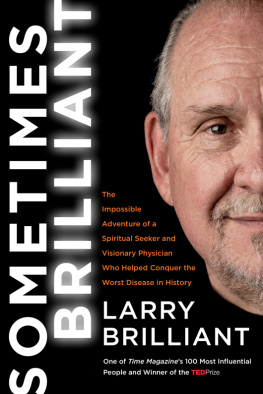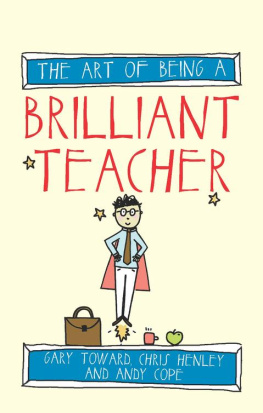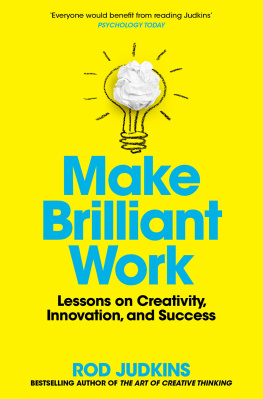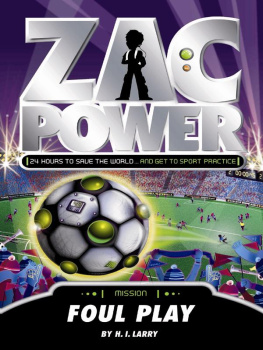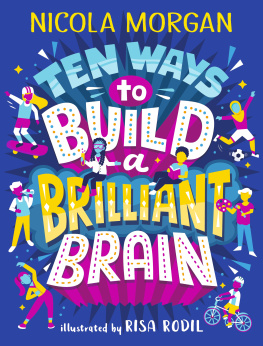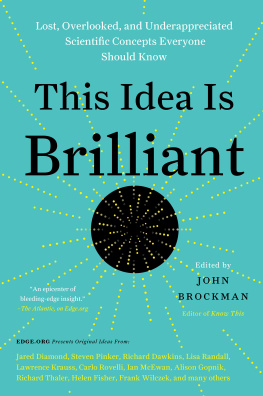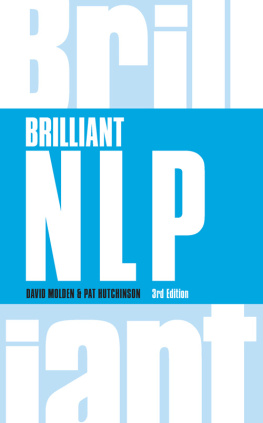Larry Brilliant - Sometimes Brilliant
Here you can read online Larry Brilliant - Sometimes Brilliant full text of the book (entire story) in english for free. Download pdf and epub, get meaning, cover and reviews about this ebook. year: 2016, publisher: HarperCollins, genre: Non-fiction. Description of the work, (preface) as well as reviews are available. Best literature library LitArk.com created for fans of good reading and offers a wide selection of genres:
Romance novel
Science fiction
Adventure
Detective
Science
History
Home and family
Prose
Art
Politics
Computer
Non-fiction
Religion
Business
Children
Humor
Choose a favorite category and find really read worthwhile books. Enjoy immersion in the world of imagination, feel the emotions of the characters or learn something new for yourself, make an fascinating discovery.
- Book:Sometimes Brilliant
- Author:
- Publisher:HarperCollins
- Genre:
- Year:2016
- Rating:5 / 5
- Favourites:Add to favourites
- Your mark:
- 100
- 1
- 2
- 3
- 4
- 5
Sometimes Brilliant: summary, description and annotation
We offer to read an annotation, description, summary or preface (depends on what the author of the book "Sometimes Brilliant" wrote himself). If you haven't found the necessary information about the book — write in the comments, we will try to find it.
Sometimes Brilliant — read online for free the complete book (whole text) full work
Below is the text of the book, divided by pages. System saving the place of the last page read, allows you to conveniently read the book "Sometimes Brilliant" online for free, without having to search again every time where you left off. Put a bookmark, and you can go to the page where you finished reading at any time.
Font size:
Interval:
Bookmark:
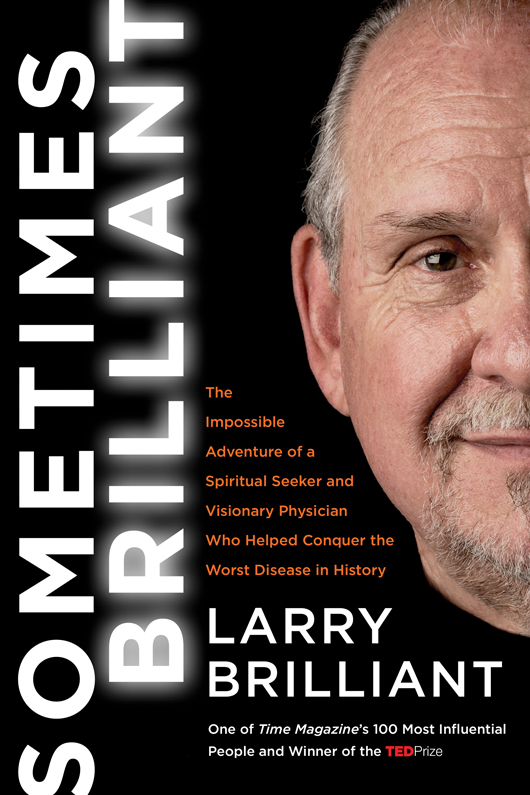


If anyone had told me that forty-five years later I would be telling this story to an audience of military brass during a talk I gave at the Pentagon, I would have said they were crazy.
To Neem Karoli Baba, who touched my heart, opened me to feel
love for everyone, and showed me the way to live a life of service.
And to my wife, Girija Brilliant, who loved me so much she
dragged me kicking and screaming to India. We have had three
wonderful children together, and this is one more chance for me to
tell Joseph Seva Brilliant and Iris Sarada Brilliant how proud I am
of them and how much I love them, and for us all to remember our
beloved Jonathan Eugene Skanda Brilliant, who died from cancer
much too young. He would have done a very close read of this
book, teased me about the pompous parts, and then laughed
loudly and lovingly at just the right places.
A t the heart of this book are two interwoven miracles.
The first miracle occurred in the middle of the Cold War, when doctors from more than two dozen countries including Russia and America set aside their enmity and fought alongside each other to defeat a common foe that had killed billions of children over millenniasmallpox.
The second miracle was that a young hippie doctor living in a Himalayan ashram was sent by his teacher, an old Indian guru, to work for the United Nations and be part of the campaign to eradicate this disease. The guru predicted, Smallpox will be quickly eradicated. This is Gods gift to mankind because of the hard work of dedicated health workers.
Less than three years later, all naturally occurring Variola major, killer smallpox, was gone.
Forty years ago, I was that hippie doctor. It is long past time for me to tell you about these miracles as I experienced them.
My memory is not clear enough to recall events as vividly as I would like but I have tried my best to capture the spirit of what really happened while trying to balance the effects of the passage of so much time. I have placed quotation marks around conversations I participated in directly or heard from trustworthy sources, but I dont pretend to remember word for word conversations from forty years ago; details have surely been modified by the passage of time. Conversations with my teacher Neem Karoli Baba, the guru who opened my heart, were often in Hindi and were translated mostly by Ravi Khanna, Dada Mukerjee, or by my wife, Girija, or me as our Hindi improved. We recorded many of these conversations each day in our spiritual diaries. And we wrote down every word of his improbable prediction the day he made it. Lest we get it wrong, we sent it out to dozens of our friends soon after.
The reporting on the smallpox campaign is accurate: its sourced, researched, and drawn from my own experiences in the field, the actual World Health Organization (WHO) files, the numerous reports I wrote for WHO, both my own and my wifes contemporaneous diaries, and the academic book I wrote on the subject when I was a professor at the University of Michigan, shortly after smallpoxs eradication (The Management of Smallpox Eradication in India), as well as confirmation from the incredible men and women alongside whom I worked, shoulder-to-shoulder. Thankfully, many are still around to hold my feet to the factual fire. You will find additional sources on the history of smallpox and its eradication at the end of the book in the Further Reading section, on page 413. I hope you will read some of them to get a broader view of the miracle of the campaign.
In this book I have retained the Indian geographical names as we used them on our reports and epidemiological maps in the 1970s. Cities and jurisdictions are referred to by the names they were called at the time. Bombay instead of Mumbai, for example, and Calcutta instead of Kalighat, Chotanagpur instead of Jharkhand, Kumaon instead of Uttarakhand. This archaic nomenclature is not intended to disrespect Indias rapid modernization but to reflect the journey taken at that time.
The people I write about are real people, but some of the names have been changed in order to prevent unnecessary embarrassment to individuals whose identification might cause pain to their families. In some cases, their actions were questionable.
For any mistakes I might have made regarding names and dates, and wherever I have failed to adequately thank those who were due more credit, I apologize in advance. Forgive me, too, for failing to include the names of the thousands of public health heroesdoctors, vaccinators, search workers, and volunteerswho worked on the program. I so wish I could memorialize every man, woman, and child sickened or killed by smallpox. To do them real justice would require a library, an archive, a monument.
As I retell some of these stories today, they sometimes strain even my own credulity, but as my father often said, before launching into one of his own intriguing tales, It is a great story, and it has the extra, additional, incremental benefit of being true.
Perseverance furthers.
I Ching
A pril 10, 1974, was hot. India hot.
Our jeep wove through the overgrown jungle, bounced over the undulating washboard road, and halted in front of the Tatanagar railway station. Slanted rays of the afternoon sun reflected off the stations fading whitewashed walls, a stoic reminder of the British ambition to link every corner of colonial India by rail.
The Indian-made jeep, marked with the official blue and white seal of the United Nations, quickly attracted a crowd. Outstretched arms grabbed at us through the open windows. Thin limbs and tired bodies pressed closer, rocking the vehicle. Zafar Hussein, the paramedical assistant assigned to me by the Government of India, gently asked the crowd to move back in Hindi and then in a language I did not understand. When space cleared he carefully and respectfully opened his door. I followed.
My foot had barely touched the ground when I heard a wail: Doctor Sahib! Doctor Sahib! Saita, saita! Doctor! Doctor! Help, help! A gaunt young mother in a bright red sari carrying a little boy jumped up from a squat, broke through the crowd, and stumbled straight for me. Twigs from the neem tree, a traditionalthough futiletreatment for smallpox, fell from her lap. Doctor! UN doctor! Please. I beg you. Help me. My baby is very sick.
Her boy was four or five years old. The woman held him out to me, motioning for me to take him. When I hesitated, she pushed the child into my arms, like an offering in a temple, her eyes pleading, never leaving mine.
The boys black hair was matted with sweat and mud, his eyes lined with kohl, the black substance Indians often use on children to protect their sight from the harsh sun. But his eyes were fixed wide open and opaque; his arms and legs dangled limp from his body. His face was streaked with blood. I held him and looked closer. He was emaciated, covered with pocks. Smallpoxs telltale buckshot patterndeep red pustules a quarter-inch round everywherelooked like angry little volcanoes ready to erupt. The lesions on his hands and feet had coalesced into an almost continuous graph; I could barely identify individual pocks. The boy had no healthy skin left on his arms and legs, no space to fit even a fingertip between his sores.
Font size:
Interval:
Bookmark:
Similar books «Sometimes Brilliant»
Look at similar books to Sometimes Brilliant. We have selected literature similar in name and meaning in the hope of providing readers with more options to find new, interesting, not yet read works.
Discussion, reviews of the book Sometimes Brilliant and just readers' own opinions. Leave your comments, write what you think about the work, its meaning or the main characters. Specify what exactly you liked and what you didn't like, and why you think so.

